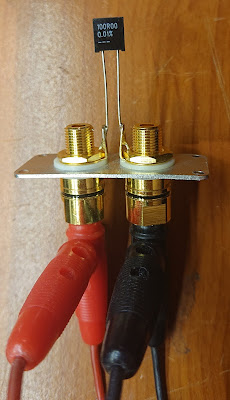I made a few but not fatal mistakes with the board, and left a few room for improvement also:
- Cosmetic: the board designation is on a wrong layer
- Order: only ordered 5 boards (I think 10 would be the same price)
- Room for improvement: the board uses female IEEE-488 connector. With a few modifications it can be used with male connector also
- Room for improvement: proper mounting holes
- Room for improvement: isolated (it needs some investigation if it required)
- Room for improvement: buffering + bus protection
During the weekend I built and tried it out
The CH340G USB Serial interface was working for the first trial.
The ISP was working for the first trial - uploaded the Arduino bootloader.
The software built and uploaded without problem.
The communication via the terminal emulator with the firmware worked without problem.
Now go and get an instrument to try it out.
As I previously mentioned, I built this interface to communicate with my HP Audio Analyzer. This equipment is not a cheap one if we are talking about a home lab, so I didn't want to sacrifice for the first test. I have several HP 3478A multimeters on hand. Two of it even not part of my lab setup.
So, I tried to communicate with it.
Half success:
When I send a command to the instrument, it does nothing.
When I send a ++read command it responds with the value actually on the instrument's screen.
I was thinking, what could be the problem.
The original design pull down the GPIB PIN 17 (REN - Remote Enable) to the ground. In my build it is connected to one of the MCU pins, to be able to further develop the project. Naturally the original firmware doesn't handle this. So I added a few lines of code to pull the REN pin to low, and the system started to work immediately.
The first goal of this project successfully achieved. The design files of the board can be find here:
https://gitlab.com/suf/suf-electronics-gpib
As the owners license of the source code doesn't allow modifications, without consent, I'm not publishing the either the original source code or my modifications. I'm intend to contact the author to discuss about the license.
Last but not least:
Many thanks for Emanuele Girlando for his great work.










